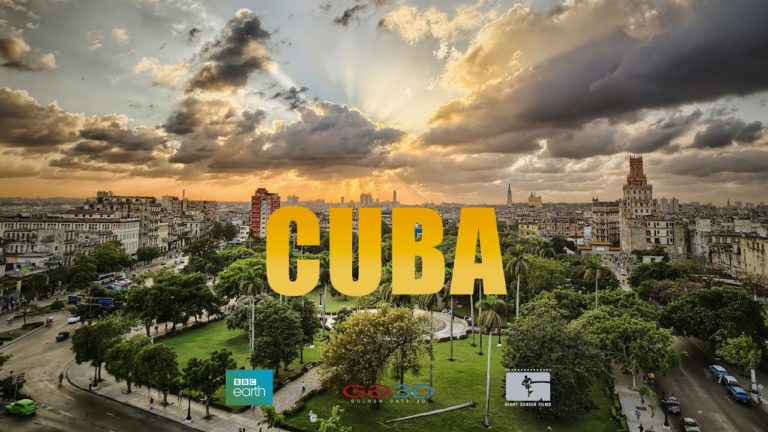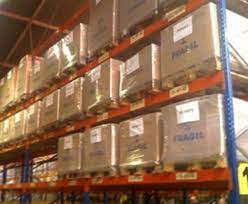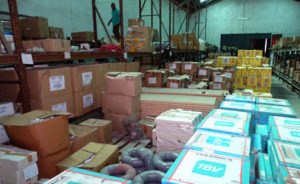(OPINIÓN DESDE CUBA) EN ALMACENES CUBANOS SE PUDREN MILLONES DE PRODUCTOS NECESITADO URGENTEMENTE POR LA POBLACIÓN
Por Rafaela Cruz, La Habana, Cuba.
En 2016, Cuba acumulaba 24.700 millones pesos en productos de ‘Lento Movimiento u Ociosos’ (ILMO), el equivalente a casi el 50% de los ingresos del Estado ese año. Según el Sistema de Inventario vigente en Cuba, para que un producto sea incluido dentro de la categoría de ‘Lento Movimiento u Ocioso’ (ILMO), debe pasar seis meses sin movimiento comercial (lento movimiento). Si supera el año, será ocioso.
En 2016, la Isla acumulaba 24.700 millones de pesos en esa categoría. Para tener una idea de lo que esto significa, los ingresos anuales del Estado en ese año rondaban los 50.000 millones. Es decir, en ILMO había valor por aproximadamente el 50% del ingreso nacional.
EJEMPLO EN PINAR DEL RIO
Por ejemplo, de las 200 unidades presupuestadas que tiene Pinar del Río, en 2018 solo 27 certificaron no tener ILMO. En esa provincia se perdieron por obsolescencia 170.600 dólares en dientes para prótesis importados desde Colombia y Chile. ¿Será que todos los cubanos que los necesitan tienen prótesis? No parece, pero si lo fuera, ¿entonces para que se gastó ese dinero en dientes sin uso?
Estos inventarios no se refieren solo a mercancías acabadas, listas para la venta o el uso. De hecho, estas son solo el 30% del total reportado. En el resto hay muchos bienes de capital —los destinados a la producción de bienes o servicios— comprados, importados, pero nunca instalados, nunca puestos a producir. Hay maquinarias, herramientas, equipos médicos, equipamientos de clima y otros incontables equipos que llevan años almacenados en Cuba, lo que representa una pérdida doble: el gasto monetario de la inversión más los productos y servicios no generados.
Estos ILMO demuestran lo increíblemente descoordinada que está la economía cubana. Son una cuantificación de las distorsiones acumuladas durante 61 años en una economía que se regula desde la política y no desde las señales que emiten los precios.
CUBA, UNA ECONOMIA SIN LIBERTAD DE EMPRESA
Una economía sin libertad de empresa o propiedad privada no genera las señales que indican cuáles son las verdaderas preferencias y necesidades de las personas. Eso es algo que solo los precios en su fluctuación libre pueden expresar. Si aumenta el deseo de las personas hacia algún producto, suben los precios de todo lo necesario para su producción, a la misma vez que disminuyen los asociados a los productos que dejan de ser demandados. Así es como los empresarios, persiguiendo el beneficio, van satisfaciendo las demandas de las personas.
Este es el único medio conocido para hacer una asignación adecuada de los recursos económicos, y siempre depende de la libertad de empresa y la propiedad privada. En una economía donde un órgano central decide los precios de casi todo, ¿cómo saber lo que quiere realmente la gente? Pues no se sabe.
Cuando Cuba abrió las tiendas en Moneda Libremente Convertible (MLC), el ministro de Economía dijo que los precios se pondrían según variaran los precios del área económica. Es decir, reconocen que la economía cubana no puede formar precios; por lo tanto, hay que fiarse de otros.
Las preferencias de los cubanos no son expresadas. ¿Pero eso qué importa? Para eso el Estado ya dirá qué y cuánto hay que consumir de cada cosa. Sin embargo, sí que importa, y el Gobierno lo sabe.
En todas las reuniones gubernamentales, visitas a empresas, alocuciones sobre economía, se repite el mismo mantra: hay que lograr “el encadenamiento productivo” de las empresas nacionales; es decir, crear cadenas de valor.
Pero, aunque reconocen que hay un grave problema en esta descoordinación interna de la economía, lo que provoca importaciones innecesarias, interrupciones en la producción, falta de valor agregado en los productos finales, pérdidas por caducidad, retraso tecnológico… En resumen, ineficiencia e improductividad. Las autoridades cubanas siguen queriendo resolverlo con llamados políticos, imponiendo más control y presión sobre los funcionarios, sin entender —o reconocer— que es en la rigidez de los precios asociada a la planificación económica donde está el problema.
Aferrarse a la planificación central a expensas del resultado económico es sencillamente criminal; criminal porque es una decisión política, de poder. En la Cuba socialista, una pequeñísima élite impone su permanencia en el poder a expensas de la economía del país, es decir, del bienestar real de los ciudadanos.
(OPINION FROM CUBA) IN CUBAN WAREHOUSES, MILLIONS OF URGENTLY NEEDED PRODUCTS ROT
By Rafaela Cruz, Havana, Cuba.
In 2016, Cuba accumulated 24,700 million pesos in ‘Slow Movement or Idle’ (ILMO) products, the equivalent of almost 50% of the State’s income that year. According to the Inventory System in force in Cuba, for a product to be included in the ‘Slow Movement or Idle’ (ILMO) category, it must pass six months without commercial movement (slow movement). If it exceeds the year, it will be idle.
In 2016, the Island accumulated 24,700 million pesos in that category. To get an idea of what this means, the annual revenue of the State in that year was around 50,000 million. That is to say, in ILMO there was value for approximately 50% of the national income.
EXAMPLE IN PINAR DEL RIO
For example, of the 200 budgeted units that Pinar del Río has, in 2018 only 27 certified not to have ILMO. In that province, $ 170,600 worth of imported prosthetic teeth were lost due to obsolescence from Colombia and Chile. Could it be that all Cubans who need them have prostheses? It doesn’t seem like it, but if it was, then why was that money spent on unused teeth?
These inventories do not refer only to finished goods, ready for sale or use. In fact, these are only 30% of the total reported. In the rest there are many capital goods – those destined for the production of goods or services – bought, imported, but never installed, never put into production. There are machinery, tools, medical equipment, climate equipment, and countless other equipment that have been stored in Cuba for years, which represents a double loss: the monetary expense of the investment plus the products and services not generated.
These ILMOs demonstrate how incredibly uncoordinated the Cuban economy is. They are a quantification of the distortions accumulated over 61 years in an economy that is regulated from politics and not from the signals that prices emit.
CUBA, AN ECONOMY WITHOUT BUSINESS FREEDOM
An economy without freedom of business or private property does not generate the signals that indicate what the true preferences and needs of the people are. That is something that only prices in their free fluctuation can express. If people’s desire for a product increases, the prices of everything necessary for its production rise, at the same time that those associated with products that are no longer in demand decrease. This is how entrepreneurs, pursuing profit, are satisfying the demands of people.
This is the only known means of making an adequate allocation of economic resources, and it always depends on the freedom of enterprise and private property. In an economy where a central body decides the prices of almost everything, how do you know what people really want? Well, it is not known.
When Cuba opened the stores in Freely Convertible Currency (MLC), the Minister of Economy said that the prices would be set according to the prices of the economic area. In other words, they recognize that the Cuban economy cannot form prices; therefore, you have to trust others.
The preferences of Cubans are not expressed. But what does that matter? For that, the State will already say what and how much of each thing must be consumed. However, it does matter, and the government knows it.
In all government meetings, visits to companies, speeches on the economy, the same mantra is repeated: it is necessary to achieve “the productive chain” of national companies; that is, create value chains.
But, although they recognize that there is a serious problem in this internal lack of coordination of the economy, which causes unnecessary imports, interruptions in production, lack of added value in final products, losses due to expiration, technological delay … In short, inefficiency and unproductivity. The Cuban authorities continue to want to solve it with political appeals, imposing more control and pressure on officials, without understanding – or recognizing – that it is in the rigidity of prices associated with economic planning that the problem lies.
Clinging to central planning at the expense of economic performance is simply criminal; criminal because it is a political decision, of power. In socialist Cuba, a tiny elite imposes their permanence in power at the expense of the country’s economy, that is, of the real well-being of the citizens.
Agencies/ DDC/ (OPINION-Rafaela Cruz. La Habana/ Extractos/ Excerpts/ Internet Photos/ Arnoldo Varona/ VIDEOS – PHOTOS – LA HISTORIA DE CUBA.
THE CUBAN HISTORY, HOLLYWOOD.









